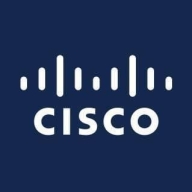

Cloudify and Cisco UCS Director are competitors in infrastructure automation and management. Cloudify is favored for competitive pricing and responsive support, while Cisco UCS Director is preferred for its comprehensive feature set, appealing to those needing robust functionality.
Features: Cloudify supports multi-cloud orchestration, allowing seamless workflows across various environments. It excels in extensibility through custom plugins and offers infrastructure-as-code capabilities with operational actions. Cisco UCS Director integrates with a wide range of hardware and software, provides centralized management, and supports multi-cloud management, handling workloads across AWS, Azure, and on-premises platforms.
Room for Improvement: Cloudify could enhance its documentation and offer more streamlined user interfaces. Additional native integrations with larger cloud providers could fortify its standing. Similarly, expanding its community support may benefit users seeking rapid resolutions. Cisco UCS Director might improve by simplifying its deployment process, augmenting its GUI for greater user-friendliness, and reducing initial deployment complexity to encourage broader adoption. Enhanced user training resources could also serve as a beneficial addition.
Ease of Deployment and Customer Service: Cloudify is recognized for straightforward deployment and efficient customer service, enabling quick setup and query resolutions. Cisco UCS Director's deeper infrastructure integration renders deployment more complex, but its extensive documentation and professional support can mitigate deployment challenges, thanks to detailed support services.
Pricing and ROI: Cloudify is a cost-effective solution, offering quicker ROI due to lower setup costs and efficient deployment. Cisco UCS Director incurs higher initial expenses, justified by its extensive functionalities and long-term ROI for extensive data center management. The decision is often between immediate cost savings with Cloudify versus long-term operational gains with Cisco.
| Product | Market Share (%) |
|---|---|
| Cisco UCS Director | 1.7% |
| Cloudify | 1.7% |
| Other | 96.6% |


| Company Size | Count |
|---|---|
| Small Business | 4 |
| Midsize Enterprise | 1 |
| Large Enterprise | 11 |
| Company Size | Count |
|---|---|
| Small Business | 3 |
| Large Enterprise | 6 |
Cisco UCS Director enables automated delivery of physical and virtual data center resources, empowering data centers to move at the speed of business.
Cloudify is an open-source orchestration-first cloud management platform. The solution allows applications to efficiently run across multiple cloud or data center platforms for premium multi-cloud infrastructure automation and orchestration. It provides infrastructure automation using environment as a service (EaaS) technology to deploy and continuously manage any cloud, private data center, or Kubernetes service from one central point while leveraging existing toolchains.
Cloudify Product Highlights
Cloudify Features
Cloudify has many valuable key features. Some of the most useful ones include:
Cloudify Benefits
There are many benefits to implementing Cloudify. Some of the biggest advantages the solution offers include:
We monitor all Cloud Management reviews to prevent fraudulent reviews and keep review quality high. We do not post reviews by company employees or direct competitors. We validate each review for authenticity via cross-reference with LinkedIn, and personal follow-up with the reviewer when necessary.